peterperkins
100 W
- Joined
- Jun 6, 2008
- Messages
- 196
fechter said:What are you using for a BMS?
My own design been running for a few years now on the UK BVS forum.
http://www.batteryvehiclesociety.org.uk/forums/viewforum.php?f=53
fechter said:What are you using for a BMS?
I wear glasses. Good thing I guess. I never did find the top of that chip.ejonesss said:fechter you are lucky that the ic top did not put out your eye
fechter said:On the current limiter circuit, I could do a run of boards if I thought there was enough interest to make it worth while. The board itself is the most expensive part. Fully assembled units are a possibility too, if I want to do some minimum wage work.
heathyoung said:You could use the inbuilt shunt on the meanwell supply, and pull power from the TL494, its even got a stable reference voltage (pin 14, 5v) for your comparator to divide for your comparator.
fechter said:Dang! those brain cells are dying fast these days.
Funny, I think the SP-320-24 I'm testing with is the very same one Methods was using (he sent it to me).
mwkeefer said:Adding a low impedance SMT shunt or a few in parallel on the outboard PCB would solve the issue of no internal shunt, then just the diff amp powered by the TL494 reference voltage should suffice.... no?
Though if were monitoring the low side of the DC output < 66v or so... those allegro Hall Current Sensors could be quite useful and fully isolated
-Mike
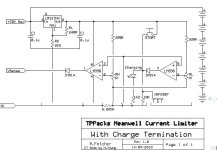

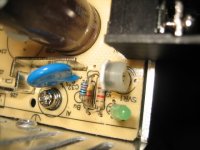
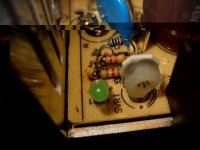
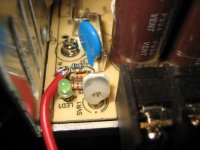


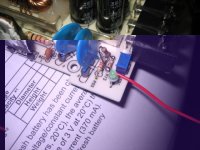
fechter said:Hey, I like it!
A couple of things to keep in mind:
At higher voltages, most people would be using multiple supplies in series, so the voltage regulator only needs to handle the output of the supply to which it is connected.
The cost of the pre-regulator parts is less than $.50 and it's only 3 parts.
If you want to be really cheap, you could tap into the auxiliary supply inside the Meanwell (Vcc on the TL494), but that would be extra work to find the right spot and add a wire.
fechter said:With just the op amp, the circuit power consumption is very low, so a small regulator will suffice. Driving the LED increases the power consumption a lot, but if a high efficiency LED is used, you can run it a a couple of mA and still see it.
fechter said:You could tie in an opto coupled HVC signal from a BMS to pull up the voltage sense line. This would throttle the current to prevent cells from going over.
The value or RL should be lowered to reduce the adjustment range. We don't need 0-15 amps range. 0 - 1.5 amps would be more appropriate. Just make RL 100 ohms instead.
fechter said:Depending on the gate threshold of the FET, you might get away without the 10k to ground, as the LED will pull it down to less than about 2v.
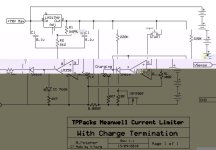

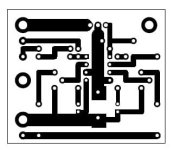

heathyoung said:Here are the two revised schematics:
Schematic v 1.1 I somehow missed the current limiting resistor for the Vsense line. Oops. Also revised the resistor values for the LED's to reduce current draw to 2.5ma - so use high brightness versions. Also added (optional) an indicator for CC mode - not strictly neccesary but I have this on the Makita charger at work and its a good indication of where the charge process is up to...........
